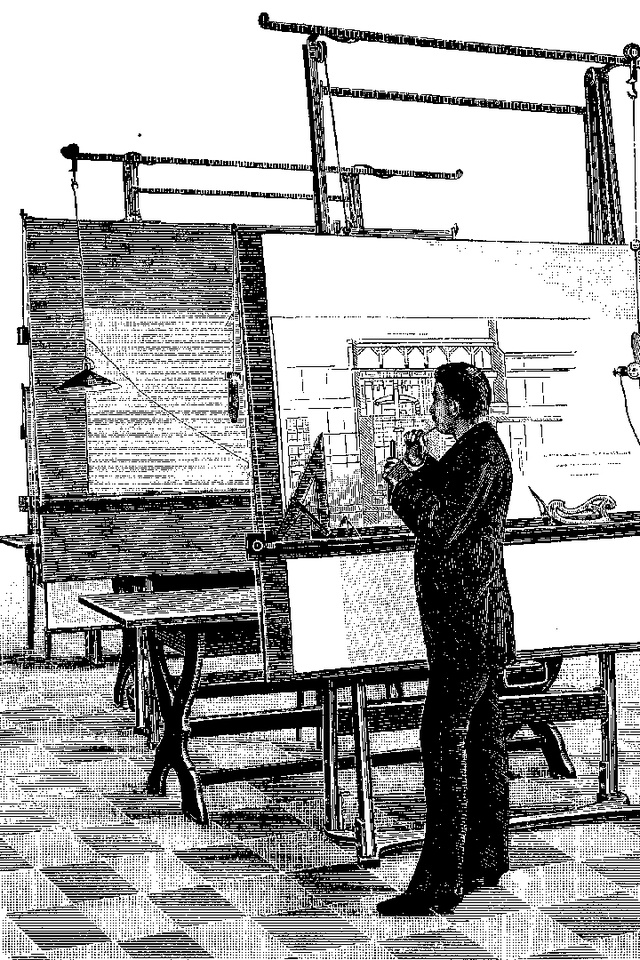Mind the gap
“After 3000 years of well-meant adaptation and evolution, architecture is a hollowed-out profession with architects seemingly less vital than ever.” Eleanor Jolliffe is discussing her RIBA-published book, Architect: The evolving story of a profession, co-authored with Paul Crosby.
She’s talking about how, over time, architects have become divorced from their polymath role, which combined that of master craftsman, engineer and artist. The disconnect is traced back to when the RIBA was formed in the UK in the mid-1800s to regulate the architectural profession – a position founded on the divisive stance that architects could not join the new society if they had any involvement at all in the building trades. As Joliffe points out, this had well-meaning intent to distance architects from the rampant fraud in the booming construction industry of the time, but the attempt to protect and professionalise architects also began to separate them from overlapping and related design disciplines such as building craft and engineering. A 1958 conference on architectural education took things a step further, deciding to raise standards and competency by requiring an ‘architect’ to have a university level of education, covering design, project management, leadership, etc. ‘Architectural technician’ became a new role to do the construction detailing — the reasoning being that greater specialisation was necessary as construction grew in complexity, and that this compartmentalisation of roles would allow all aspects of architectural work to be carried out more skilfully.

As Jolliffe puts it: “The logic is understandable, the outcome disastrous. They had decided on the question of ‘profession or art’ by cleaving the profession in half. Perhaps accidentally, they had removed the knowledge the architect would need to fulfil their role from architectural education. No one would consider removing the understanding of oil paints from a painter; but to remove the majority of the knowledge of construction skills and engineering from architects has somehow seemed logical.”
Jolliffe’s historical analysis reminded me of the NZIA conference of 2005, which was celebrating 100 years of the profession in New Zealand. The guest speaker was Kiwi-born Mark Wigley, at the time Dean of the School of Architecture, Planning and Preservation at Columbia University. His message to the assembled: “I believe our discipline will become splendidly irrelevant, if not extinct, unless new forms of engagement are cultivated”.
He was talking about the alarming globalisation of “highly regulated, generic” accreditation standards being applied not just to the profession but also to architectural education. “This kind of standardisation is, in my opinion, the death of education and ultimately the death of architecture.”

He didn’t stop there. Wigley argued that calls for more regulation and, in particular, more self-regulation of the profession are a terrible mistake and reveal something of the “inner masochism” of the field. Its effects are stultifying, boring and result in architectural blandness. “To be consistently, every day, mediocre is a difficult thing and we’re working hard on persuading the entire planet that we’re exactly that.”
He said the protective core of accreditation standards is mistakenly seen as the basis for society’s confidence in architects, missing the point of what architects are good at. “We’re not good with shelter. We’re good at talking about shelter. We reflect upon it intellectually. We turn practical demands into interactive discourse — we allow people to see shelter differently.”
Wigley wanted the architect rebuilt as a “public intellectual”, one who literally thinks and speaks in public through his or her buildings: an “activist synthesiser of various forms of knowledge and an elegant commentator of the world”.
Wigley’s and Jolliffe’s views form a useful backdrop to the Ministry of Business, Innovation & Employment’s (MBIE) current calls to improve occupational regulation in the building and construction sector. As well as looking at ways to improve the Licensed Building Practitioners (LBP) regulations, MBIE is also reviewing the Registered Architects regime. Questions being asked include: “Is there a difference in the quality of a registered architect’s design work compared to other design professionals?” And: “Is continuing occupational regulation justified for the architectural profession in New Zealand?”

In its consultation document, MBIE agrees that assessment for a Design licence through the LBP regime is perceived to be set at a lower threshold than that of the architectural profession’s self-regulated standards. And that the pathway to becoming a registered architect is both more expensive and time-consuming. But it notes, also: “there is a perception that some prospective architects are using the LBP Design class as an easier gateway into the profession.”
MBIE is concerned about a gap between the two professions that it wants closed to ensure that loopholes are not exploited by either side, as this could lead to substandard and potentially dangerous building work. What to do? Raise the competencies for the LBP Design class to decrease the gap or highlight the differences by strengthening the Registered Architects Act?
You could do both. As Jolliffe argues, the role we currently label as ‘architect’ is due some evolution, perhaps by reclaiming the craft of structure and construction into its ambit. Wigley calls for the architect to be “activist synthesiser of various forms of knowledge and an elegant commentator of the world”. In a time of climate crisis requiring new specialist knowledge and skill to meet the existential threat, that’s exactly what we need architects to be.









